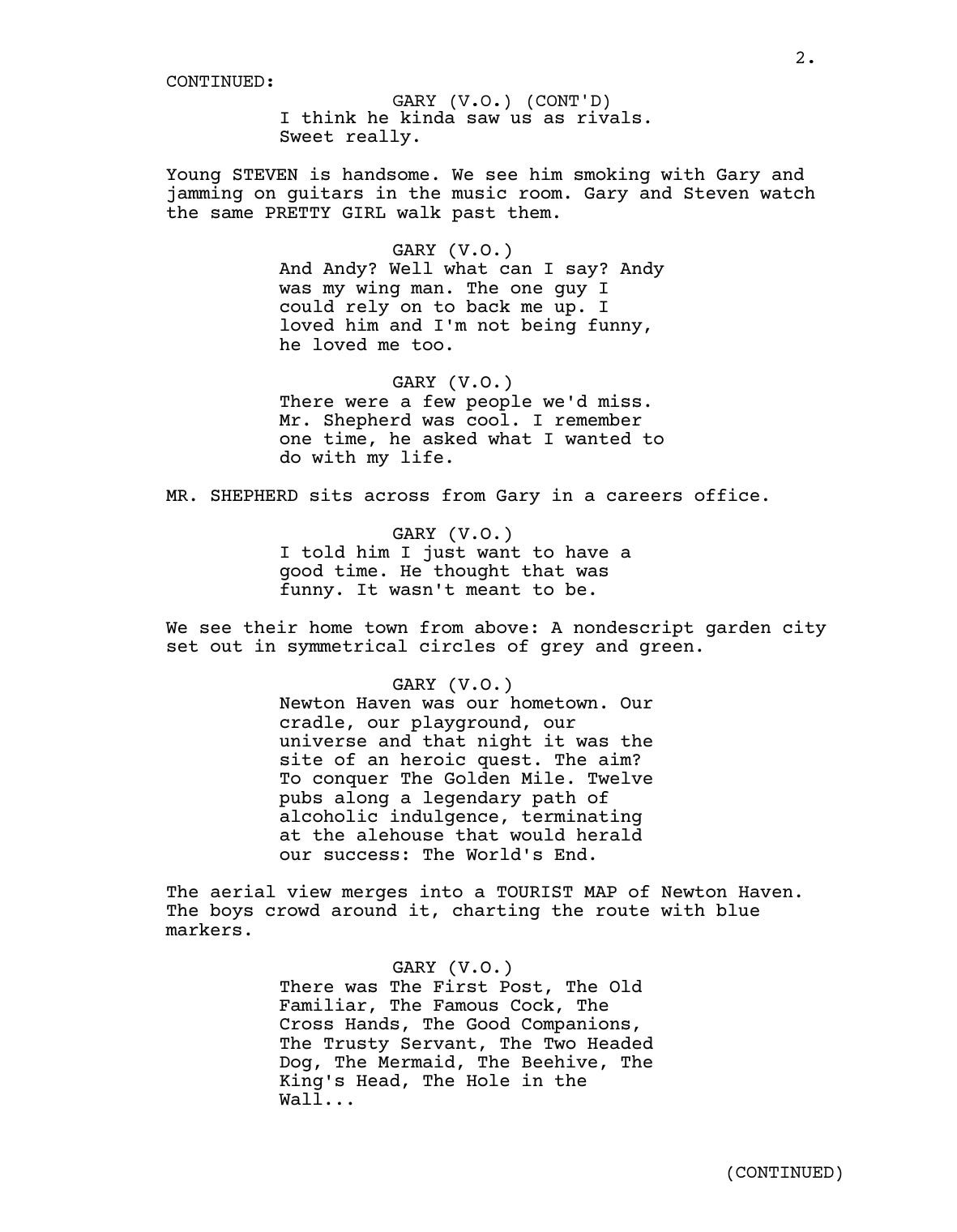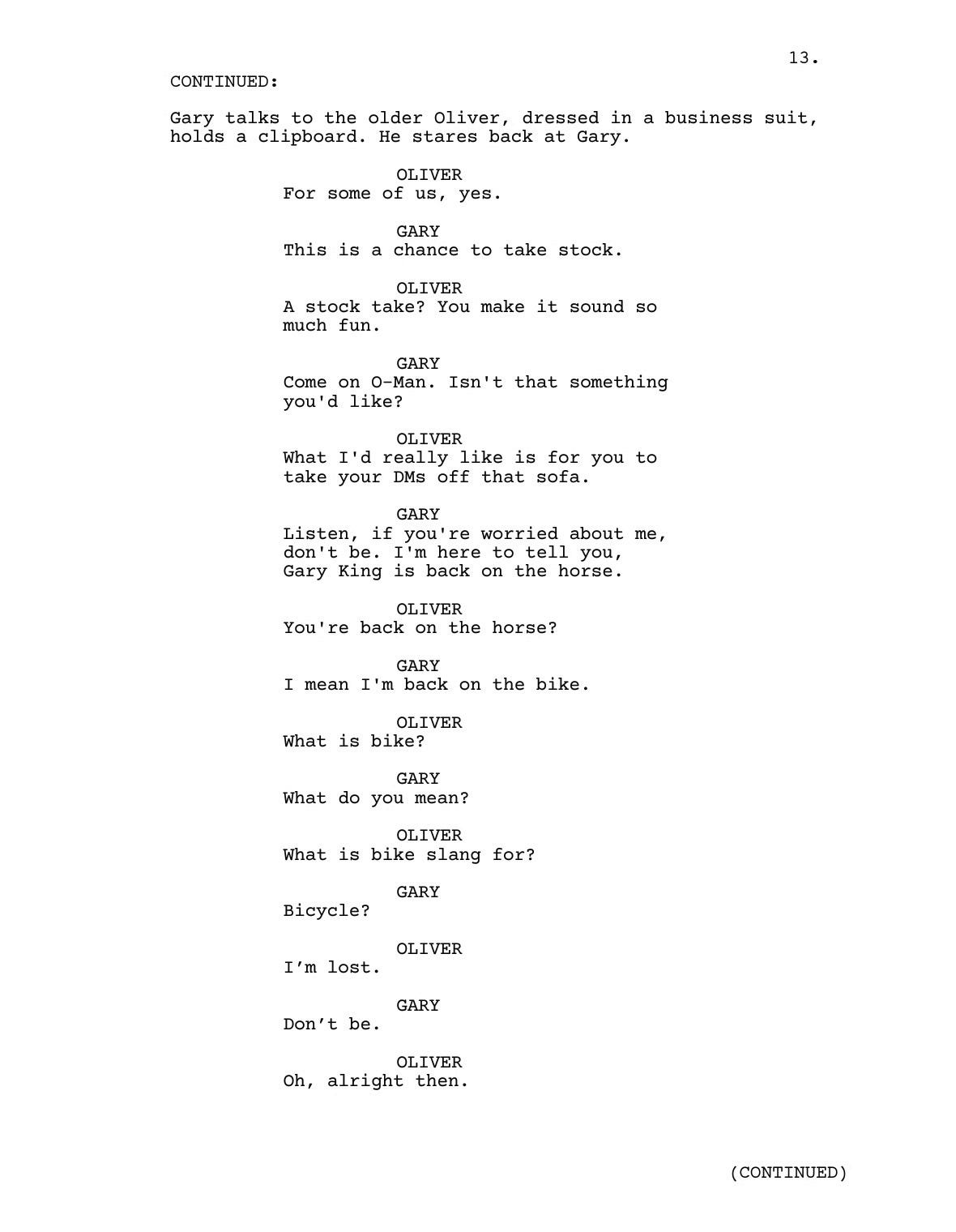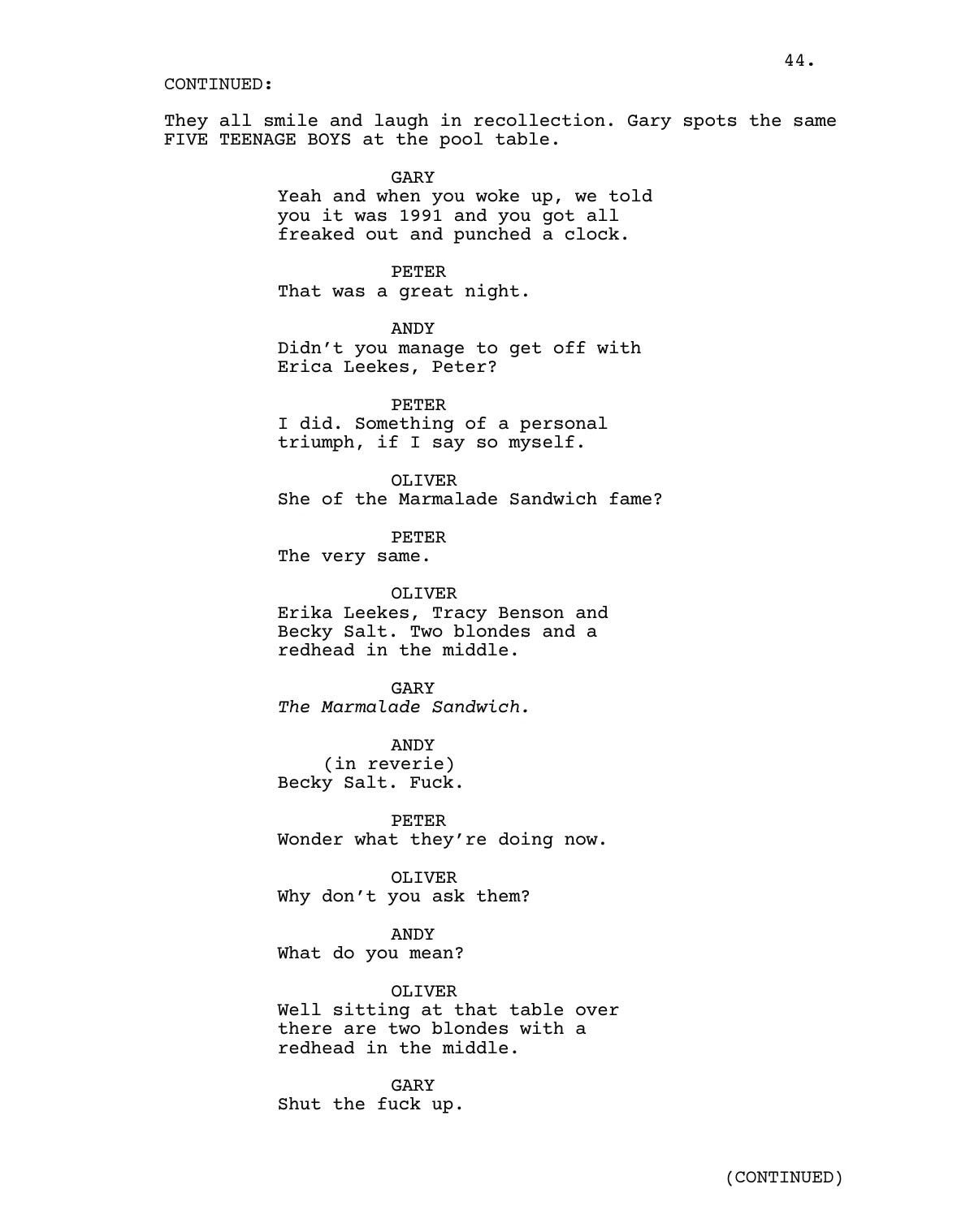The World's End (2013) Script Review [BONUS]
Simon Pegg and Edgar Wright wrap up their unlikely Three Flavours Cornetto Trilogy with a science-fiction thriller that is the best of the bunch.
Logline: Five friends reunite in an attempt to top their epic pub crawl from twenty years ago, only to discover that they have unwittingly become humanity’s only hope for survival.
Written by: Simon Pegg & Edgar Wright
Pages: 126
“When you go back to your hometown, you feel alienated.”
That’s how Edgar Wright, half-joking and half-serious, describes the pitch for The World’s End in one sentence, the third and best installment in The Three Flavours Cornetto Trilogy. It’s funny, it’s fast, it’s unpredictable, and an even meditative sci-fi outing that turns the feeling of being an outsider into a literal alien invasion.
Gary King is stuck in the 1990s. The coolest kid in town and the leader of his gang of five, he peaked after high school and his life has been downhill ever since. For him, the crowning moment was ‘The Golden Mile,’ an incomplete pub crawl that he and his friends after their last day of school. Reminiscing about it prompts him to go about convincing the old gang to reunite the friends for a weekend in order to finish ‘The Golden Mile.’
Except, you know— it’s been decades since they’ve all been together, and they’re close to 40 years old.
But something is fishy about Newton Haven. People don’t seem to recognize them; the pubs have lost their character in favor of a bland aesthetic. The answer isn’t long in coming: the town has been taken over by blue-blooded aliens that they come to call ‘blanks.’ What started out as a reluctant journey to drink their way through 12 pubs soon turns into a literal life-and-death situation.
Each of the five are named— and arranged— in the hierarchy of a medieval court. There’s Gary King, the leader; his best friend, Andy Knightley (a knight); Steven Prince (self-explanatory), a rival to Gary especially where girls are concerned; Peter Page (a page); and Oliver Chamberlain (again, self-explanatory). Each of them have distinctive personalities— Andy is a teetotaler and the only one unafraid to call out Gary; Oliver is a yuppie who always has his Bluetooth glued to his ear; Steven is stable; and Peter is quiet. As the night progresses and the group get increasingly drunk, they slip back into their old mannerisms and rhythms.
Another character becomes crucial to the story: Sam, Oliver’s sister. As teenagers, Gary and Steven competed for her affections (Gary won); as adults, Steven still secretly pines for her. Although she enters the story around the 37-page mark and briefly disappears, Sam returns, especially during the climax.
Although the blanks— and later, the hive-mind of the Network— are the main threat, one can argue that nostalgia is the other villain. Andy, Steven, Peter, and Oliver have grown up; Gary still wears the same outfit, drives the same car, and even listens to the same music tape that Steven once made him. He’s a man-child who refuses to grow up. A Peter Pan whose immaturity wears out his friends’ patience quickly. It’s partly why the reveal on page 108 hinting that Gary’s alcoholism comes from a deeper and desperate situation hits harder. He’s been struggling more than the others.
This last bit is what makes this third story the strongest bunch of the trilogy. It has a certain maturity that is not as prevalent in Shaun of the Dead (#77 on the WGA List of 101 Greatest Screenplay of the 21st Century) or Hot Fuzz. It has a truth and honesty that makes the story more than about its science-fiction elements.
I think it boils down to two reasons. The first is that the other two installments were homages to the zombie genre and cop film genre respectively; The World’s End screenplay, though tipping its hat to the science-fiction genre, is its own thing.
The second is its alcoholism angle; it feels raw. When Pegg broke his silence about his struggles with alcoholism, the sincerity takes on a personal resonance. In an interview, Pegg maintains that writers have to approach the writing from a place of truth. Here, the waters of truth run deeper than usual.
Simon Pegg and Edgar Wright are masters in the art of how to write a memorable screenplay opening. In The World’s End screenplay, the opening outlines the journey of ‘The Golden Mile’ that lets us know where the characters will be headed. It also foreshadows the events that will follow. In the 90s, Oliver was the first to drop out of the crawl; in the present, he is the first casualty. In the 90s, Gary and Sam would have sex at The Two Headed Dog; in the present, although Sam has no interest in having sex with Gary, this is the point when Sam tags along for the story. In the 90s, a brawl breaks out at The Beehive; in the present, this is the point when the blanks and the men engage in a public battle for the first time. This prologue fits neatly in four-and-a-half pages, told with the briefest stage directions, and hints at the arrival of the aliens at the end in the form of a shooting star.
Compare this with the finished result, and you’ll notice that so much more is happening than described on the page; had the writers noted every detail, it’d take over 10 pages to get it all down.
Following this prologue, Pegg and Wright spend the next 15 pages performing a classic ‘assembling the team’ gambit, as Gary visits Peter, Steven, Oliver, and finally Andy to do the pub crawl again. It unfolds quickly, gets us acquainted with these characters in a very short space of time, and it’s quite funny.
From there on, Act 2 (pages 20-108) covers ‘The Golden Mile.’ It starts innocuously if not enthusiastically…
It’s only from page 52 that they discover the metaphorical alienation is literal. As a screenplay, this marks the Midpoint; but in the finished film, it occurs even before the 40-minute mark.
From page 52 to 108, it becomes a race against time as the men desperately try to avoid being caught by the aliens… by continuing the crawl.
Incredibly, ‘The Golden Mile’ concludes at the end of Act 2 instead of serving as the climax. Instead, Act 3 serves as the confrontation between the Network and the completely hammered trio of Gary, Andy, and Steven, largely in the form of a courtroom drama (pages 109-118)…
… before segueing to a literal explosion that forces the trio plus a sober Sam to outrace a wave of red plasma that wipes out all the world’s technology.
The final eight pages depicts the fates of the characters. Andy reunites with his estranged wife; Steven and Sam move in together; the blank versions of Oliver and Peter return to their human counterparts’ lives. None of them see Gary again. But they’d be heartened to discover that he’s gotten better.
That right there is Gary’s character arc. He starts the story as an alcoholic without purpose or a group; he ends the story as a teetotaler having found a purpose: leading the blank teenager versions of Andy, Steven, Peter, and Oliver. (There’s an argument to be made that he’s still clinging to the past, but for now, it’s growth.)
Brevity is the friend of a hyper-visual director like Edgar Wright. As in the other two scripts, The World’s End screenplay has brief stage directions in order to accommodate the dialogue. Moreover, going into detail would slow the reading pace. The bare bones stage directions means that the director has the freedom to film a scene as he likes. For instance, take the joke on page 31 where Andy reveals he is a teetotaler. In the film, there’s a visual gag of four beers poured into four glasses, followed by one glass being filled with tap water.
In the script, it simply cuts from Gary’s incredulous reaction to the next scene.
When extensive directions and description is required, Pegg and Wright save it for key moments. Especially in the action scenes, such as the bathroom fight and bar fight scenes; even then, they only take up one or two pages.
Some thing that is different in The World’s End screenplay is the use of song titles to preface certain scenes. They’d succeed in securing the rights of these songs for the movie, such as Primal Scream’s ‘Loaded’ and The Stone Roses’ ‘Fool’s Gold,’ but it’s incredibly risky writing scenes set to songs or indicating what track you have in mind— even if you are directing it— because if you can’t get the song you want, it might affect the scene in question.
Another fun fact is that Pegg and Wright conducted research on the names of real pubs. Partly to create authenticity, partly to use the names to foreshadow what happens in each pub. The pubs, then, act like drunk Tarot cards. The first stop is The First Post, where they settle in. The second stop is called The Old Familiar— when they walk in, it’s like déjà vu.
In another, The Mermaid, the men are nearly lured in by the blanks like sirens singing to doomed sailors; while the Beehive is where they openly encounter the blanks in public and learn more about their prerogative.
The Hole in the Wall has the best gag; it refers to Gary diving through the window.
The World’s End caps off Pegg and Wright’s unlikely trilogy with a tight script filled with excellent comedy and unexpected delights. It’s got memorable characters, depth, and action scenes. It really is a trip.
Notes:
Brooks, Xan and Barnes, Henry (July 17, 2013) The World's End: Simon Pegg, Nick Frost and Edgar Wright on their apocalypse comedy - video interview | The Guardian
Jonze, Tim (July 9, 2018) Simon Pegg: ‘I was lost, unhappy and an alcoholic’ | The Guardian
Franklin, Oliver (July 17, 2013) GQ&A: Edgar Wright | GQ Magazine






















